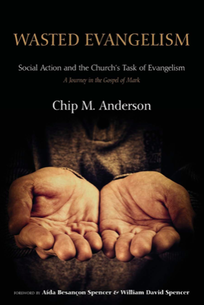 Significance: Determine Analogous Obedience The narrative and programmatic significance of both “preaching” and “casting” indicate that the content of the to preach(v. 14c) component of the Mark 3 commission is the authority to cast out the demons (v. 15). This is grammatically and syntactically allowable and is affirmed by how Mark crafted his narrative. Reading the commission in this way challenges a narrowly defined, verbal- and cognitive-based understanding of evangelistic activities. As fisher-followers, the church’s paradigm for evangelism is found in the Mark 3 commission, which indicates that Christians and the Christian community should include evangelistic activities that confront Satan’s dominion over the realms of humankind and that reorient those realms to reflect the inaugural presence of God’s kingdom. Thus, the task of “casting” corresponds to any analogous obedience (i.e., application) that confronts what is contrary to God’s design for living in the land[1] and that demonstrates how God’s rule affects the realms of humankind. In order to move appropriately from text to application, there should be a correspondence between the meaning of the text, its significance to the readers/listeners, and the action taken that indicates obedience to the text. For the church in front of the text, the significance of the Mark 3 commission is our alignment with and commitment to the mission of Jesus (1:14–15) and to exercise Jesus’ authority through actions that demonstrate, concretely and evidentially, that God’s rule and reign has entered time and space. Certainly, as the whole of the NT indicates, evangelism includes proclamation (i.e., verbal- and cognitive-based activities of communication) that presents the information of the Good News, announcing and explaining that the kingdom is near. Yet, such proclamation is not the end of evangelism. Mark’s Gospel narrative as a whole and the Mark 3 commission specifically indicate there is also to be a resultant consequence of the “preaching,” another viable mode of language, namely the doing of deed-parables. As parables revealed the mysteries of the kingdom, deed-parables evidence (i.e., have outcomes that indicate) the undoing of Satan’s power over the affairs of humankind (Mark 3:27) and, as a result, seek to reorient people and the world back toward God’s rightful dominion (an underlying significance of the Mark 4 parable of the mustard seed, vv. 30–32).[2] Evangelism is the spread of the gospel, the seed sown (Mark 4), which according to Mark’s narrative is dynamically linked to the end of Satan’s dominion and the inauguration of God’s rule and reign. This is what biblical evangelism looks like: as Jesus’ “casting” action demonstrated the end of the strongman-Satan’s kingdom and the arrival of God’s kingdom—visible and evidential acts that indicate the time has been fulfilled and the kingdom of God has come near (1:15a, author’s translation)—so, for the church seeking to obey this text, the significance of the “casting” component of the Mark 3 commission is the continuation of Jesus’ mission to confront the powers that oppose God’s dominion. Therefore, as indicated by the fisher-promise’s association to OT contexts that include the issues of poverty and, as well, the implications of the Mark 12 poor widow episode (12:38–44), applications for “casting” should include advocating for those affected by poverty.[3] Separating social action from evangelism is an unwarranted dualism As I demonstrated in chapter 3 (“You Will Appear as Fishers”), the Mark 3 commission is the inaugural fulfillment and premiere application of the Mark 1:17 fisher-promise. The fisher role is related to God’s judgment and action toward people and structures that distort God’s creation from his design and reign over it, which includes advocacy for those affected by the issues of poverty and injustice. This allows evangelism, that is, the sowing of the word/gospel to also include the realm of social action, which demonstrates God’s rule and dominion over the realms of society and people that impact the poor and economically vulnerable. This is supported by antecedent OT material related to the economically vulnerable that is associated with the judgment role of fisher-followers.[4] This implies that the Mark 3 commission (3:14–15), to some extent, should be associated at the application level with social action, which is legitimate obedience for following Jesus Christ and for being faithful to the gospel. Therefore, obedience to the Mark 3 commission includes “applications, activities, and outcomes of social action and justice”[x-ref] that should be an intentional component of a church’s or Christian community’s evangelistic activities, which is, at least in part, the fisher-follower’s task. The obedience (i.e., application) and the desired outcomes analogous to the purpose and intent of the commission to have authority to cast are those which demonstrate God’s reign and rule. Separating social action from evangelism is an unwarranted dualism that is alien to the gospel as Mark presents it in his narrative and, as well, to the wider biblical record. As proclaiming the kingdom’s arrival was demonstrated by Jesus’ deed-parables (i.e., castings, healings, miracles), the evangelistic task of the church is to include analogous activities that indicate the presence of God’s rule and reign. This also makes redemptive-historical sense of the authority to cast out the demons (Mark 3:15) as a display of the all-encompassing arrival of God’s kingdom: God in Jesus Christ has reconciled all things to Himself (Col 1:20) and with a view to an administration suitable to the fullness of the times, that is, the summing up of all things in Christ, things in the heavens and things on the earth (Eph 1:10). Social action that reflects God’s design for living in the land—social action, that is, that demonstrates his reign and his righteousness that is to be expressed among people—is the responsibility of faithful fisher-followers of Jesus, God’s Messiah-King. Consequently, evangelistic activities of the church ought to seek to ensure that the economically vulnerable and the poor (i.e., the land-less) are full participants in the benefits of living in the land. In other words, as Mark’s narrative richly portrays the gospel of Jesus Christ (Mark 1:1), social action outcomes should be included as a component of a church’s task of evangelism. [1] The concept of “living in the land” is borrowed from Walter Brueggemann (The Land), who uses the terminology to refer how the Israelites were to live in the land of promise as neighbors, where everyone is to benefit from living in the land; the land-laws and covenant-stipulations governed how they were to live “in the land” together, specifically being mindful of the economically vulnerable and the poor. Although I am using it in a contemporary sense—Americans living in America—I am borrowing the idea that everyone, the rich, the poor, the middle class, all neighbors to some extent are “living in the land.” [2] Note the final discussion on this parable (i.e., the mustard bush) in chapter 2, “Wasted Evangelism.” [3] Refer back to chapter 1, “Widows in Our Courts,” for a biblical illustration how both people and systems can cause others to live with the effectsof poverty; additionally, review the OT texts that juxtapose idolatry with poverty in chapter 5 (“Idolatry and Poverty”). [4] This is the argument of chapter 3, “You will Appear as Fishers.”
0 Comments
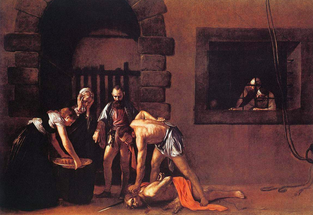 The mission summary frames the Mark 3 commission My syntactical conclusion developed above—the authority to cast out the demons (3:15) is the content of to preach (v. 14c)—is made more evident by the Mark 3 commission’s link to the Mark 1:14–15 mission summary: “Now after John had been taken into custody, Jesus came into Galilee, preaching the gospel of God, and saying, ‘The time has been fulfilled, and the kingdom of God has come near; repent and believe in the gospel.’”[1] The geographic identifier--Jesus came into Galilee (1:14b)—indicates that these two verses form a summary for the Galilean ministry that runs from the fisher-promise--And He was going along the Sea of Galilee . . . Jesus said to them, “Come follow (after) Me and I will create you to become fishers . . . ” (1:16–17, author’s translation)—through 9:33–49, a teaching episode set in the Galilean town of Capernaum (9:33).[2] These geographic bookends focus the mission summary at a literary level on Jesus’ Galilean ministry, forming an underlying relationship between “preaching the gospel of God” (1:14c) and Jesus’ teaching and actions emplotted throughout the narrative. Furthermore, the central role of Jesus’ casting-ministry is also clearly established by a casting-event bracket, first at the opening of the Galilean ministry (1:21–27) and, then, at the close (9:38–41) as Jesus begins turning his attention toward Jerusalem and the soon approaching passion. This bracketing affirms the importance of “casting” activities in the Galilean section of the Gospel narrative: the first time Jesus “came preaching the gospel of God” (1:14c) in Galilee involved an exorcism (1:21–28) and at the close of the Galilean ministry even those outside the inner-circle, who acted out the mission of Jesus, are associated with “casting” (9:38–41). Mark 1:14–15 is clearly a summary and it functions as a programmatic and interpretative lens for his Gospel narrative and for the ministry of Jesus that was carried out through both teaching and miracle that reveal the nature and significance of the kingdom that has come near (1:15). The content of the gospel of God (v.14c) is epexegetically explained in 1:15.[3] The gospel that has come from God (1:14c)[4] is defined by each element in verse 15, clarifying God’s decisive action in the appearance of his Son.[5] The mission summary is composed of two parts: first, an indication that Jesus had preached “the gospel of God” (v. 14); then, the content of that preaching (v. 15). The Mark 3 commission follows the same pattern set by Mark 1:14–15.
The gospel of God (1:14–15) and the Mark 3 commission both are announcement in which the content is the arrival of the kingdom of God and, as well, its implications. The content of the gospel of God (1:14) that Jesus preached is summarized in declarations (v. 15) that Mark has carefully balanced, forming two pairs of statements “each constructed in synthetic parallelism.”[7]
The first pair are declarative statements, each containing a perfect indicative verb that implies a completed action that continues in effect; the second are present imperatives—commands—that flow from the declarations. The first indicative is the time has been fulfilled, which corresponds to the first imperative “repent.” The second indicative is the kingdom of God has come near, which corresponds to the second imperative “believe.” The meaning is rather straightforward: the time of the old age has been completed (cf. this present evil age, Gal 1:4), that is, the time under Satan’s dominion has come to its eschatological end; and, the time of God’s kingdom has now been inaugurated, reorienting the realms of humankind to reflect his right to reign and rule.[9] The pattern established in 1:14–15 is exactly what happens throughout the Galilean ministry and is reflected in the Mark 3 commission. Timing and the evangelistic task of fisher-followers The question of timing is relevant, for the summary (Mark 1:14–15) informs us that both the time has been fulfilled and the kingdom of God has come near (author’s translation). Discussions regarding the “time” fulfilled and the “nearness” of the kingdom typically focus on chronology: do these references indicate present or future events? Mark, however, uses the word kairos (time) to indicate a decisive moment (12:2; 13:33) or a span of current time (i.e., a season; 10:30; 11:13). Mark’s use of near (eggizo centers on proximity (11:1; 14:42). These are significant observations, for at the literary level, Mark’s narrative portrait of Jesus’ “preaching of the Gospel of God” (1:14c) and its content (v. 15) parallel his immediate and proximate actions during the Galilean ministry: the end of Satan’s dominion and the inaugural reign of God are demonstrated in Jesus’ authority to cast out demons and through his other miracles as well. A number of interrelated events follow the mission summary that stress arrival (i.e., the kingdom has come near). This is a function of the following miracle stories, particularly the casting, that demonstrate “God’s rule had entered into history.”[10] The weight of the narrative parts (i.e., the episodes, stories, and events throughout the narrative) indicates the timing is immediate in Jesus’ ministry and, then, will continue through the authority to cast granted to the fisher-followers (3:15; 6:7), who are commissioned to imitate Jesus’ mission. This fits the use of the perfect indicative verbal expressions in the mission summary (peplerotai, has been fulfilled; eggiken, has come near), the subsequent narrative (i.e., the Galilean ministry), and the Mark 3 commission. The kingdom of God is the substance of the created fisher-followers’ evangelistic activities, not solely as proclamation, but primarily their actions (i.e., their deeds), which continuously reveal the kingdom’s nearness. Like the word sowed by the Master Sower in the Mark 4 parables and Jesus’ kingdom-deeds (i.e., deed-parables), this, too, is the evangelistic task of fisher-followers. The significance of the Mark 3 commission It is not coincidental that the fisher-promise (1:17) follows the mission summary (1:14–15), for the Mark 3 commission is the inaugural fulfillment of the fisher-promise and echoes the pattern set forth in the mission summary. The “casting” episodes act as indicators that the time has been fulfilled and the kingdom has come near (1:15), for Jesus is already invading Satan’s territory. The role of fisher-followers is to imitate Jesus’ activities: as Jesus was the premier inaugurator of the kingdom of God, thus ending Satan’s dominion, which is demonstrated through casting, so, also, the fisher-followers (3:15). This is the significance of the Mark 3 commission: to be obedient to the commission, then, is to develop authoritative application through analogous deeds that demonstrate the defeat of Satan’s kingdom and that reorient both people and the world toward God’s dominion. The final interpretive summary (III) below gives a sense of this fuller understanding of the Mark 3 commission and its significance for the reader/listener today:
[1] The Mark 1:14–15 text here reflects my translation of the Greek, which will be used throughout the remainder of this section, unless otherwise noted. [2] Although most limit the Galilean ministry to Mark 1–6 (note for example Guelich, Mark 1–8:26, 41; Witherington, Gospel of Mark, 77), it appears that it continues through to Mark 9, which is indicated by the geographic bookends. [3] Guelich, Mark 1–8:26, 43. [4] Regarding the phrase to euaggelion tou theou (the gospel of God, Mark 1:14c), the genitive tou theou (of God, Mark 1:14c) is most likely used ambiguously by Mark to mean both the Gospel about God (objective genitive) and the gospel from God (subjective genitive). Nonetheless, here I indicate that the phrase to mean “the gospel from God” emphasizing God’s action in Christ Jesus, his appearance and ministry (e.g. see France, Gospel of Mark, 91). [5] Lane, Gospel According to Mark, 63–64; Witherington, Gospel of Mark, 77. [6] Along with Mark 1:14–15, the Mark 3:14–15 reference here reflects the author’s translation. [7] Guelich, Mark 1–8:26, 41; also Marcus, Mark 1–8, 175. [8] See Marcus, Mark 1–8, 175; this gird reflects the author’s translation of Mark 1:15. [9] On this I follow Marcus, who has a good discussion on the meaning of the mission summary (Mark 1–8, 173–76). [10] Ibid., 46.
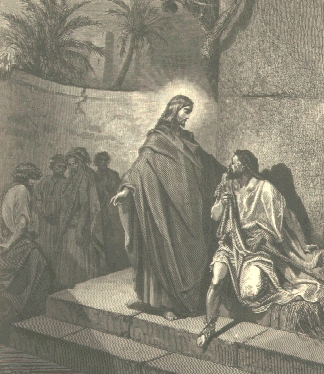 Rereading the Mark 3 commission text Three main verbs related to Jesus govern the establishment of the twelve whom he commissioned: he went up(avabainei, v. 13a), he summoned (proskaleitai, v. 13b), and he created (epoiesen, v 14a). The force and combination of all three verbal expressions stress Jesus’ authority, which aligns with Mark’s narrative plotline.[1] Additionally, these actions focus on his unique authority for establishing God’s kingdom through a ministry outside of Jewish temple leadership (i.e., a new Moses and a new exodus) and for the creation of a people (a new twelve, 3:13–19; a new family, 3:33–35), who are to reflect the kingdom-outcomes associated with his appearance. These elements have been the emphasis of the plot (i.e., the “sequence of events emplotted in the text”) so far, indicating that Mark continues to follow his established programmatic content that defines the nature of the gospel. The Mark 3 commission (vv.14–15) for the created twelve not only forms (and informs) their fisher-ministry (i.e., the application that will reflect their faithful obedience to the gospel), it also provides a paradigm for all fisher-followers; namely, those who believe in the gospel (1:14–15) and follow after Jesus (1:17) are those who demonstrate (through actions and outcomes) the inauguration of God’s kingdom. A typical reading of Mark 3:14–15 understands that the twelve are commissioned for two distinct tasks: “to preach” and “to cast out demons.” This heightens the tendency to view the “to preach” component as solely the verbal proclamation of the Good News that Jesus died for our sins. Although a very important component of the Good News, this aspect of the gospel is appropriated from other NT documents and texts and, then, “applied” here. As a result, for many “preaching” is “evangelism” that is applied as various verbal- and cognitive-based activities (e.g., preaching, teaching, witnessing, etc.) about the personal, redemptive implications of Jesus’ death on the cross with someone’s conversion as the hopeful outcome. When the text is viewed in this way, application is separated into two distinct components that disconnect the Mark 3 commission from the narrative plot. A reading that separates the two components without syntactical or narrative consideration can limit the inferred evangelistic significance for those standing on this side of Mark’s Gospel story, which, then, can result in narrow, misdirected, and, even, non-authoritative application. However, the Mark 3 commission suggests, not two distinct tasks, but interrelated aspects that are associated with the sequence of events emplotted in Mark’s narrative. A re-examination of the commission text (specifically vv. 14–15) will show another potential reading that better aligns with Mark’s narrative, the programmatic nature of the gospel, and Jesus’ kingdom-inaugurating ministry. A syntactical analysis[2] of Mark 3:14–15 can aid in reading the text more effectively: And he [Jesus] created twelve (epoiesen dodeka), so that (hina) they would be with him and (kai, conjunction) so that (hina) he would send them forth to preach (kepyssein) namely (that is) (kai, epexegetical) to have authority to cast out (echein exousian ekballein) the demons. This display of syntactical relationships helps to visualize how Mark crafted the commission together, offering a potentially different, yet legitimate, reading of the commission. My translation below reflects the syntactical relationship between the two components to preach and to have authority to cast And he [Jesus] created twelve, so that they would be with him and so that he would send them forth to preach, namely (that is) to have authority to cast out the demons [author’s translation].[3] In contrast to the typically understood cognitive-based definition for evangelism, this reading of the commission, which the text allows, suggests a different direction regarding its significance for fisher-followers on this side of the text. As a result, it opens a wider range for potentially relevant and appropriate evangelistic activities and outcomes that should be adopted by the church. After “summoning” those whom He Himself wanted (v. 13b), Jesus created twelve (v. 14a) so that they (i.e., the created twelve) would be with Him (v. 14b) and so that he would send them forth with a commission (v. 14c–15). The two hina (so that) clauses indicate two resulting purposes that align with Mark’s narrative.[4] The first hina clause (so that they would be with him, v. 14b) suggests an intentional relationship between Jesus and the created twelve. Certainly being “with Him” has many implications and means more than just “tagging along with Jesus.” While “being with Jesus” is set in motion at the initial calls in Mark’s first chapter (see vv. 16–20), the results are given content (definition) throughout the narrative before Jesus actually grants the twelve the authority to cast in 6:7. At the narrative level being “with Him” (3:14b) means that the created fisher-followers are insiders who do “the will of God” (3:35), who receive direct teaching and insight concerning the kingdom (4:10–11), and who witness his divine power (4:35–41) and the inaugural increase of God’s kingdom (5:1—6:6). Additionally, the twelve fisher-followers, who were created to be with Him (3:14b), experienced the spread of the seed/word/gospel, not solely through verbal- and cognitive-based activities (e.g., Jesus’ preaching, teaching, parables), but primarily through Jesus’ deeds (e.g., casting, healing, and other miracles).[5] The created twelve are also “sent forth” to preach (v. 14c) and to have authority to cast (v. 15). It should be noted there is no object (i.e., the content) for the “preaching” component (v. 14c). This provokes many to supply “the gospel” for what is preached. It is fair, perhaps, to suggest supplying the unwritten “Good News,” but it is unnecessary. An assumption is made of the text, namely that the “and” (kai) between the two infinitive clauses functions as a simple conjunction, inferring, then, two distinct tasks: preaching and casting. This, too, is not necessary. Also, note that the commission component after the “and” (kai) is actually, not “to cast out the demons,” but to have authority to cast out the demons (v. 15). The syntactical analysis displayed above indicates that the conjunction “and” (kai) should be understood epexegetically, that is, offering a fuller explanation and the content of to preach. I have, therefore, rendered the “and” (kai) as “namely (that is)”: so that he would send them [the created twelve] forth to preach, namely (that is) to have authority to cast out the demons. In other words, the content of the “preaching” is the authority to cast out the demons. [1] See chapter 4, “A Prelude to Judgment,” for a discussion regarding the centrality of Jesus’ authority in the Mark 1:21—3:6 conflict thread, which is an integral part of Mark’s plotline. [2] A syntactical analysis helps to show how the parts of grammar relate to each other, indicating the relationships of subjects, main verbs, direct and indirect objects, and subordinate and explanatory clauses. The syntactical analysis here informs and reflects the author’s translation of the text. See Kaiser, Toward an Exegetical Theology (pp. 87–104) for an explanation of the syntactical analysis as a component of exegesis. [3] The following references to Mark 3:14–15 reflect my translation. [4] Hina (so that) may express purpose, result, or content depending on the context. In a few cases it may even express other (related) relationships such as an imperative or a generic-specific relationship. I have chosen “resulting purpose” intentionally to indicate a fine line between the two. Jesus creates twelve for a purpose that results in “being with him” and “being sent forth.” See Arndt and Gingrich, Greek-English Lexicon, 376–78. [5] See Mark 1:21—6:6.
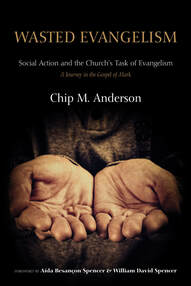 Pay Attention to Significance—Think Deeply About Application Walter Kaiser reminds us, “Exegesis is never an end in itself.”[1] In Toward an Exegetical Theology, he rightly points out that the ultimate purpose of exegesis is “never fully realized until it begins to take into account the problems of transferring what has been learned from the text over to the waiting Church.”[2] Obedience to the biblical text is essential to the Christian life and is, as well, defining for the life of the church. This should be the goal of the mindful Christian and what faithful leadership should intentionally foster in a church community (Mark 3:35). This is why developing appropriate, not just “relevant,” application is important. Yet, applying the Bible can offer its own set of problems and difficulties. If we move too quickly to application, it is quite possible to miss the obedience implied by the text (any text for that matter) and, as well, the gospel. Before examining the Mark 3 commission, specifically vv. 14–15, it is worth considering the problem of application. The problem of application In their book, How to Read the Bible for All Its Worth, Gordon Fee and Douglas Stuart point out that many Christians start with “the here and now” and “read into texts meanings that were not originally there.” They rightly affirm that Christians “want to know what the Bible means for us,” and “legitimately so.” However, we cannot make the Bible or the gospel or any text for that matter “mean anything that pleases us and then give the Holy Spirit ‘credit’ for it.”[3] Fee and Stuart hit the mark as it relates to the problem of interpretation: the step of good study and exegesis to decipher the original author’s intention is too often skipped or undertaken lightly, with readers/listeners jumping straight-away to “the here and now.” This actually confuses interpretation with application. Although Fee and Stuart’s point concerns interpretation of the text, the same problem occurs when the “here and now” of contemporary application is read back into the text. We cannot make any application we want from any text, give the Holy Spirit credit, and then call it obedience. Application can often be read into a text, again, confusing interpretation with application. A fixation on the practical does not inevitably lead to obedience of the biblical text. In view of these present set of studies, application, as evangelism is typically understood, might not necessarily indicate faithfulness to the gospel of Jesus Christ (Mark 1:1). This can be a problem with application—that is, application is not always obedience. Moving from meaning to significance, then to application Understanding what the biblical author (in this case, Mark) meant is certainly the first step necessary for seeking faithful obedience to the gospel of Jesus Christ (1:1). The previous five chapters have sought to do just that. Yet, bridging the gap from the then to the now demands thoughtful attention. In order to think more deeply and thoroughly about application, three basic steps are essential to the process:
Meaning is that which is represented by the text, that is, what the biblical author intended by the words, syntactical and contextual relationships, and use of antecedent biblical material and contexts. Significance establishes the relationship between the original meaning and the person, persons, place, or situation (or “anything imaginable”) on this side of the text.[4] The meaning of the text does not change, but its significance to those on this side of the text (who, when, where, etc.) does change and can be relevant in different ways.[5] Application, on the other hand, is the least rigid of the three elements for determining faithfulness to the gospel and can take multiple forms to reflect obedience. Still, application needs to flow from significance and be an appropriate action that reflects the obedience implied by the text (e.g., the Mark 3 commission) or biblical concept (e.g., the gospel). For example, the meaning of the Mark 3 commission is determined by exegesis (an analysis of the text and surrounding narrative). The significance of that meaning is deciphered by the text’s relationship and its implications to those on this side the text. In other words the reader/listener should ask, What is the significance of the Mark 3 commission to me, to my church, and to the community where I live? Application, then, is the appropriate and analogous actions, behaviors, and/or attitudes that produce or indicate faithful obedience to the text. If Mark intended his audience to understand that those who follow after Jesus will be created fishers of men who have a role in inaugurating the kingdom that has arrived in the appearance of God’s Messiah-King (1:1, 14–15, 17),[6] then it is important to discern the significance of the commission components to preach and to have authority to cast out the demons (3:14–15) for today’s readers/listeners. Application, then, requires a determination of what appropriate and analogous actions correspond to thatsignificance. [1] Kaiser, Toward an Exegetical Theology, 149. [2] Ibid. [3] Fee and Stuart, How to Read the Bible, 26. [4] Hirsch, Validity in Interpretation, 8. [5] Ibid., 255. [6] See chapter 3, “You will Appear as Fishers,” for the background of this interpretation.
And he appointed twelve (whom he also named apostles) so that they might be with him and he might send them out to preach and have authority to cast out demons (Mark 3:14-15).
 “You need to be more practical.” These are the dreaded words no preacher or Bible teacher wants to hear, particularly if he or she wants to be considered effective and well-liked in modern, contemporary church circles. I am among the unfortunate who have been admonished and, even, scolded with these words more often than I’d like to admit. Yet, I am not ready to yield to the tyranny of the practical. As modern Christians, particularly evangelicals, we often measure biblical information (teaching, preaching, sermons, commentary, Bible studies, etc.) by its immediate practical value. The up-side—Christians want to be obedient to Scripture. This is a good thing. The down-side—a preoccupation with the “practical” can too often dissuade us from thinking deeply about the significance of a text, the kind of reflection needed for developing well-thought through application, which ought to be based on an appropriate and authoritative reading (i.e., an exegesis) of the text. The path to application can be too quickly made and too frequently unconnected to the original intention of the biblical author. Wasted Evangelism is not intended to be “practical.” However, I have worked hard throughout the last five chapters to uncover the meaning of the Markan texts under consideration, ending each study with the significance of these texts for church communities, for church leaders, and for those who call themselves Christian. Each chapter unfolded more fully the nature and content of the gospel we are to believe (Mark 1:1, 14–15), seeking to answer the question, How should my faith, our church, our discipleship, our evangelism be informed and formed by the narrative of Mark’s Gospel? I mentioned early in this book that chapters 1 through 5 were originally papers presented at meetings of the Evangelical Theological Society between 2006 and 2012.[1] At the conclusion of my paper on the Mark 1:17 “fishers of men” text (chapter 3 in this volume), I made this assertion: The fisher metaphor is appropriate, not just narrowly for individual, private salvation, but more broadly for applications, activities, and outcomes of social action and justice, as well. I offered this deduction based on the antecedent OT meaning of the fisher concept and on my conclusion that the Mark 3 commission (vv. 13–15)[2] was the inaugural fulfillment of the Mark 1:17 promise that Jesus would create his followers to become fishers of men. After I finished presenting the paper, during the Q&A, a very nice gentleman (a pastor I believe) asked a reasonable follow-up question: “Does that mean ‘casting out demons’ is social action?” Without hesitation I responded, “Yes, it does.” As a result of my overly confident off-the-cuff response, I began crafting a longer answer. This chapter, in part, is that longer answer: In light of the promise to be created fishers, what is the significance of the Mark 3 commission for Christians and church communities on this side of the text? This final chapter is a far cry from any “how to” regarding specific, practical application. Although there is a measure of exegetical investigation regarding the Mark 3 commission, this chapter, more so, offers a model for deciphering the significance of the text. Here, I will focus on the process for developing application that reflects obedience to the text and a legitimate range of potential outcomes, which I posit can be related to social action that addresses the issues of poverty that surround local congregations. This will be as practical as I get! The Gospel, Deep Enough to Include God’s Concern for the PoorThe previous five chapters have been a series of in-depth exegetical arguments, demonstrating that Mark’s programmatic content links the gospel and evangelism to social action.[3] Thus, social action falls legitimately within the realm of evangelism. I have endeavored to show that a narrow, proclamation-centered definition of evangelism based exclusively on word-studies and isolated proof-texts does not match the narrative meaning of the gospel, particularly as Mark presents the gospel of Jesus Christ, the Son of God (1:1). Clearly a mere verbal- and cognitive-based definition of evangelism solely related to the etymology of the word “evangelize” is too narrow and devoid of much of the biblical content that Mark gives his Gospel narrative. As the previous studies have shown, Mark relies on OT backgrounds and contexts (e.g., 1:2–3) to fill the gospel of Jesus Christ (1:1) with defining and programmatic content. Typically, it is accepted that the gospel is defined by incorporating various OT motifs and concepts such as God’s dominion, the Exodus, exile, redemption, and even sacrificial propitiation and forgiveness. The previous chapters have shown that the same OT contexts that Mark harnesses to give programmatic definition to the gospel also clearly contain correspondences and direct references regarding socio-economic relationships and community responsibilities toward the economically vulnerable and the poor.[4] As the five previous studies have demonstrated, social action, therefore, can be evangelism. In chapter 3, “You Will Appear as Fishers,” an examination of Mark 1:17, I concluded that the promise to be created “fishers of men” finds its inaugural fulfillment and premiere “application” in the Mark 3 commission; namely, fishers are those who are with Jesus and who, then, will be sent out to preach and to have authority to cast out the demons. Through the Markan context and antecedent OT background, I showed that the “fisher metaphor is appropriate for applications, activities, and outcomes of social action and justice”([x-ref]).[3] This implies that the Mark 3 commission to preach (v. 14c) and to have authority to cast out the demons (v. 15) can be associated with social action and, thus, can be legitimate obedience to Jesus-Messiah and faithful application of the gospel. Close examinations of Mark’s programmatic understanding of the gospel of Jesus Christ (1:1–3), the fisher-promise (1:17), the Mark 3 sandwich and Beelzebul episode (3:20–35), the Mark 4 parable of the Sower who Sows, and the account of the widow vs. duplicitous scribes in Mark 12 all have shown that the gospel itself is defined broadly and deeply enough to include God’s concern for the poor. Fisher-followers of Jesus, the Messiah-King (1:1, 17), are commissioned to demonstrate the presence of God’s kingdom (3:14–15), which is the gospel of God (1:14–15). As part of the application process (that is, thinking deeply and more thoroughly about application), the following seeks to show that the significance of “preaching” and “casting” (3:14–15) provides a basis for building social action outcomes into a church’s evangelistic activities. [1] This chapter was originally, in part, presented at the annual meeting of the Northeast Region of the Evangelical Theological Society, which met at the Alliance Theological School, Nyack, NY, April 2013. [2] The full text encompasses vv. 13–19, which includes the list of the twelve in vv. 16–19; however this study more specifically will focus on vv. 14–15, the Mark 3 commission component. [2] My working definition for biblical social action: a means to ensure that the blessings and benefits of living in society reach to the poor (see the Introduction for an extended explanation). [3] All the previous studies/chapters in this volume address the wide range of OT texts related to the poor; see chapter 5, “Idolatry and Poverty,” specifically for a list of OT texts and contexts Mark utilizes in his Gospel which refer to the economically vulnerable and issues of justice. [4] See chapter 3, “You will Appear as Fishers” for the full exegetical argument.
IV. The “Inner [One New] Humanity” Temple (aka "Inner Man") and the Revelatory Nature of the Church There are enough hints, allusions, word plays, and inferences to draw the conclusion that “the saints who are at Ephesus” (Eph 1:1) are indeed God’s temple (2:18–22; 3:6, 8–10, 14–19) in contrast to the plethora of pagan temples in the region and who are the fullness of God in Ephesus et al. They are God’s temple, with Messiah Jesus as its cornerstone (2:20), a building created and being built, not by human hands (2:11) of stone, wood, and metal, but by God’s words, through his apostles and prophets, made effective and filled with his Spirit, ever expanding, right there in (a) place (and the next place and then the next, etc.). The church (a local church) is being built as a house-temple to reveal the mystery of God’s reconciliation work in Messiah Jesus (Eph 3:5–10; cf. 1:9–10; 2:10). The reconciling work of the cross becomes the reconciling of flesh (i.e., people and systems and institutions, 2:11–16; 3:10; 6:10-15) in (a) place; the deconstructing of social and institutional powers, heavenly and earthly (cf. 1:10). The local church, as God’s temple where his fullness is housed (dwells), is to be a revelation of God, his mystery in Messiah. Set in contrast to contemporary (ANE) “temple” life, a corporate inference to Paul’s “inner man” seems most reasonable. In the previous paragraphs (Eph 3:1–13), Paul frames the following prayer (vv. 14–19) by, first, explaining the nature of his ministry and of the church as the revelation of the “mystery of Christ,’ which he already had alluded to as the “one new humanity” (2:15c), the incorporation of the Gentiles into church(es) (i.e., the promises of Christ through the gospel,” 3:6c). Thus, a fair reading of Ephesians 3 as a whole suggests that the church (a church) itself is a revelation of the gospel. Understanding the polemical temple backdrop to which Paul utilizes, there is further reason to read the revelatory nature of the church (a church) as appropriate to grasp the intent of his Ephesians 3 prayer. In other words, the church (a church) is a “thin place” where the mysteries (i.e., the revelation of the gospel) is revealed. The “thin place” is that sacred space, the place where the unseen mysteries of the heavenlies and the concrete places of the earth touch, cross, meet. A thin place is where one can walk in two worlds at the same time, the two worlds fused together, where the differences can still be discerned. As someone explained: “A thin place is a place where the boundary between heaven and earth is especially thin. It’s a place where we can sense the divine more readily.” This is why Paul prays as he does for the “saints who are at Ephesus” et al in verses 14–19 and offers the benediction in vv. 20–21 concerning ekklesia and all future generations of churches. The “one new humanity” (Eph 2:15c) is the very expression of the temple, the inner sanctuary where God is housed, where he speaks, and is revealed. The “inner man” (more so, the inner humanity) that is gathered in house-temple-churches (literally, in the homes and at the supper tables) are the revelation of the gospel of Christ. The church (more so, a church-gathered) as God’s temple is this “thin place.” V. The Corporate Church Implications: Revelatory Church Growth Outcomes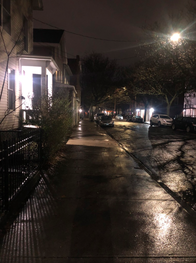 1. The habits of church life need to move away from the building-centered experience to be the church in (a) place: i.e., non-building-centered outcomes to determine church growth (it is the reconciling element of the cross among people that is being joined together and growing into a holy temple in the Lord, that is being built together into a dwelling place for God by the Spirit (Eph 2:20b–22): God’s new revelatory temple. 2. The habits of church go counter-cultural, moving away from a privatized Christian experience toward a corporate application of what it means to be the church in a place, a gathered-house-temple, with a concrete home (a neighborhood) address, where strangers and unequals (note the reconciliatory aspect I am suggesting) participate as church around a supper table [unlike a building-centered church experience, where neighborhood is absent]. 3. Since the stress is on the inclusion of Gentiles as fellow heirs and fellow-partners with believing Jews, part of the church’s revelation exists, as a gathered-temple/church, to be a visual (flesh of a neighborhood or community) that demonstrates reconciliation outcomes (based on Ephesians 2:11–22 and 3:1–13). 4. Church growth outcomes should reflect the realities of what it means to be God’s temple in (a) place: Outcomes measured in the language of neighborhood, reflecting the reconciliation of actual people (i.e., strangers and unequals, etc.). 5. Church growth outcomes should reflect the decision-making that removes barriers to accessing the Father and promoting what draws people into free access to the Father (as opposed to accessing a building). 6. Think cosmologically. Act locally (develop outcomes related to the local neighborhood and wider community).
III. Implications from Solomon’s Temple Dedication and Other OT Temple Texts (B)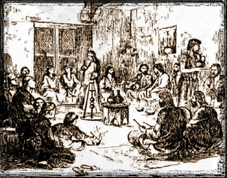 The semantic range of esō (inner), Solomon’s temple, and Ezekiel’s future temple. The sematic range of use of esō (inner) plays a corresponding role throughout the temple building project and in the restoration of the temple as envisioned by Ezekiel.[1] Although the New Testament use of esō as in Eph 3:16c, what is easily noted is that the use of esō, esōtatos, and esōteros is prevalent (widely used) in the 1 Kings and 2 Chronicles, as well as Ezekiel’s vision of the future temple, to describe the construction, design, furnishings, and direction of its structure and temple items. The esō-terms can refer to many parts, entrances, or directions within the temple structure and furnishings, but yet, it should not escape our notice that the inner court and the most holy place share in this words use as well. esō
esōtatos
esōteros
The temple construction and the Solomonic temple dedication prayer have numerous parallels, word-links, and conceptual association with both Paul’s Ephesians 2 “one new man” context and his Ephesian 3 prayer that references the “inner man.” The conclusion and consequence of the temple prayer and building is glory-filling 1. The event or consequence concluding construction of the temple was God filling the temple with his glory (presence, spirit, cloud). Another parallel, actually a type-antitype (an anti-parallel), is the reference that the glory filling the temple prohibited access, which is ironically reversed in the “one new man” and the mysterious consequence of Messiah Jesus’ work referred to in Ephesians 3. These texts indicate the equal and free access to the Father by believing Gentiles and believing Jews. We should see this in light of the redemptive results referred to in Ephesians 1: v. 6, to the praise of the glory of His grace; v. 12, to the praise of his glory; v. 14, to the praise of his glory. The same result occurs in Ezekiel at the conclusion of the restoration of God’s eschatological temple, namely the glory fills the temple.
2. The temple measuring language also finds its way into the Ephesians 3 prayer: see 1 Kgs 6:1-6; 2 Chron 1-5; cf. Ezek 40-47. Ezekiel’s new temple vision There is a strong link between Ezekiel’s restoration chapters (37-48) and the Ephesians 2 “one new man” and Paul’s Ephesians 3 prayer: 1. Ezekiel 43:5 (LXX), καὶ ἀνέλαβέν με πνεῦμα καὶ εἰσήγαγέν με εἰς τὴν αὐλὴν τὴν ἐσωτέραν [And the Spirit lifted me up and brought me into the inner court; and behold, the glory of the Lord filled the house.] The glory of God plays a key role, first in its departure in Ezekiel 1 and, then, in its return in chapter 43. Additionally, in Ezekiel 1 and 8, the prophet’s vision includes his “glimpse of part of the heavenly temple.”[3]
2. Measuring language: The dimensions given in the Ezekiel visions all seem to be God’s heavenly temple rather than a temple in Jerusalem, as Ezekiel 43:12 suggests in referring to “the top of the mountain.”
Ezekiel takes nine chapters to show specific measurements for this future eschatological temple.[4] G.K. Beale recognizes this same connection to the eschatological temple in Revelation 21 (“its length and width and height are equal”) and the measurement language in 1 Kings 5:17; 6:20–22; 7:9–10, even noting the dimensions of the “holy of holies” in 1 Kgs 6:20 ( length . . . and the breadth . . . and the height” of the holy of holies were equal in measurement).[5] 3. The inner reference in Ezekiel’s description of the restored, future temple
4. The dwelling language (not lexical, but conceptual):
5. The glory filled the inner court/temple/house (with an antecedent to the wilderness tabernacle).
The overall effect of the restoration and measuring of God’s people and, as well, his temple is to assure the exiles God will bring about his promises, his remedy for the condition of exile. Beale points out, the “theophany of Yahweh in his heavenly temple was intended to reassure the prophet that the faithful among the exiles were still related to the true heavenly temple, though the old one had been decimated.”[7] Measuring demonstrated surety of the vision and God’s abilityto bring it about. Zechariah 6:11–15 and the future temple. Zechariah 6 combines a wide range of themes found in Chronicles (Kings), Ezekiel, and, as well, Ephesians concerning the (future) temple: The Branch-Son-temple-builder and those “far off” come to rebuild the temple.
Isaiah 11, the Spirit, and Messianic wisdom. Interesting, in Isaiah 11 the Spirit of the Lord rests upon the Branch (Isa 11:2), that is, “the Spirit of wisdom and understanding” (πνεῦμα σοφίας καὶ συνέσεως), a word combination rarely used, is strongly associated with temple-building. The Ephesian parallels should be noted in Paul’s Ephesian prayers (1:10, 17; 3:10). Additionally, “wisdom” and “knowledge” is associated with the design and construction the temple (2 Chron 1:11, 12; 2:7, 12, 13). Paul connects wisdom (Eph 5:13) and Spirit in Eph 5:18, continuing to infer the corporate, local congregation reference to “inner man.” Eph 5:18 is a temple-filling (be filled in Spirit; note the plural) reference, similar as Paul’s prayer that the Ephesian congregation “be strengthened with power through His Spirit in the inner man” (3:16b).[8]
Footnotes
[1] Note the LXX utilizes esō, esōtatos, and esōteros with little lexical difference, save whatever the context is implying. [2] 1 Macc 9:54 (“the inner court of the Temple,” τῆς αὐλῆς τῶν ἁγίων τῆς ἐσωτέρας) [3] G.K. Beale, The Temple and the Church’s Mission: A biblical theology of the dwelling place of God (Downers Grove: InterVarsity, 2004), 337. [4] Jason Eric Beals, “National Restoration and the Divine Dwelling Place in Ezekiel 37:15–28,” Masters thesis (Master’s Seminary, Sun Valley, CA, April 2013), 12. Also see Schmitt and Laney, “Messiah’s Coming Temple.” Also Ralph Alexander, “Ezekiel,” 6:943-96; Cooper, Ezekiel, 349-428. [5] G. K. Beale, “Eden, the Temple, and the Church’s Mission in the New Creation,” J. Ev. Theol. Soc. 48/1 (March 2005) 5-31. [6] An interesting OT text in light of Paul’s words of prohibition (And do not get drunk with wine . . .) and the (likely) temple reference (i.e., πληροῦσθε ἐν πνεύματι, be filled in Spirit) in Eph 5:18. [7] See Beale, The Temple and the Church’s Mission, 337. [8] Also Daniel 2, 7, the heavenly powers, and the whole earth. Christ’s expanded rule over the cosmos exercises authority over both the earth and the heavens: this makes total sense, namely the role of the temples where to illustrate and provide the means to appease both the earthly rulers and the heavenly deities who control the life upon the earth. The reference to “heavenly places” points to a cosmological mission, as Paul’s prayer implies, becomes localized in Ephesus through his body, his fullness in that place. The Daniel 7 “Son of Man” is linked in language and concept to the Ephesians 2 “one new man” (and Dan 7-8 present the one-and-the-many concept between the Son of Man and the saints of the Most High). I. Leveraging the Concept of Sacred Space reFocuses a Socio-Rhetorical Interpretation In order to hear more effectively Paul’s Ephesians 3:14–19 prayer, a socio-rhetorical approach can aid the reader in the listening process. The goal here is to recognize that the original audience had experienced life in time and space, which promoted habits and beliefs that developed their social reality different from our own. This approach assumes a tapestry of “cultural textures” have been interwoven into the text of Ephesians.[1] Such an interpretative tactic allows the socio-cultural location in Ephesus et al. and, as well, their habits and beliefs—namely, the cultural, social and habitual background noise of their daily lives—to help us hear how the original readers would have heard what we are now reading in Paul’s Ephesians 3 prayer. The nature of Paul’s style and his identification of the church in Ephesus as God’s household-temple (Ephesians 2:18–22) will be explored, which will also help focus our potential interpretation of his phrase in Ephesians 3:16, the “inner man.”
Witherington further identifies Ephesians as “epideictic rhetoric,” a style that displays dramatic tones that would have been appropriate for a document intended to provoke an attitude of worship, giving a heightened liturgical imagination to its hearers/readers designed to produce a community-centered response. Although “epideictic rhetoric” typically did not call for a specific action, Paul, nonetheless, harnesses this style to “enhance knowledge, understanding, or belief”[6] in what God in Messiah Jesus has done on behalf, in the midst of, and through the “the saints who are at Ephesus” (1:1). The style and content of Ephesians 1-3 seem to focus our attention in just this direction. The “epideictic rhetoric” can clearly be seen in the two Ephesian prayers (1:15–23; 3:14–19), the second of which (3:14–19) contains our text under consideration (3:16c). Paul offers these prayers on behalf of the church in the greater Ephesus area, each provoking a heightened imagination of God’s action in Messiah toward the house-churches (cf. 3:20–21). Paul prays that God would increase their comprehension of God’s action and what it does in and through them as household-gathered-churches. The prayers are self-actualizing and actually fulfills what is requested of God on behalf of the Ephesus church—the prayer is initially answered as the believing community hears the words of Paul’s petition. He beseeches God to open their hearts as a local[7] believing community so that they would expand and enhance their knowledge and experience of God’s powerful work in Messiah Jesus. The stacking and enhanced language and imagery not only fits the temple worship experience formerly encountered by the Ephesus believers, it also gives an enhanced imagery for the new house-churches, who, as they are gathered, are God’s fullness (1:23) and temple-house (2:19–22) in Ephesus et al. (The new temple in town!) And, although often taken and preached individualistically (i.e., to the believer), the culminating verses of this highly liturgically charged and lofty worship section (1:3-3:19) has a benedictory call addressed to the whole of the church in Ephesus. Now to Him who is able to do far more abundantly beyond all that we [that is, the church, the one new man; cf. 2:15ff.] ask or think, according to the power that works [which is the content of the two prayers, the resurrected and ascended Messiah] among us [en humin, among us, i.e., the one new man], to Him be the glory in the church and in Christ Jesus to all generations forever and ever. Amen (3:20–21) In other words Paul’s prayer is: “may the essence and benefits described in this homily (in 1:3-3:19) effectually become a reality for the gathered-church in this place, for all generations; may what God has brought about through his actions in the death and resurrection of Messiah Jesus become the belief and action among and through the (local) church, His body, which is his fullness (cf. 1:23; 3:19).” These prayers, which take up a rather large of amount of word count in the first three chapters of Ephesians, “are acts of praise and adoration [themselves], even though they include petitions on behalf of the audience.”[8] The requests (themselves) are to lift the congregation as a whole, who is God’s temple in Ephesus et al., into the realm of reality that reflects what Paul has written already in 1:3–14 as well as 1:15–23 and 3:1–13. The rhetorical function of the paragraph, 3:14–19, with its doxology and benedictory call that follows (vv. 21–22), is to enlarge the vision of the congregation as agathered-church in that place, God’s temple-house in Ephesus et al.[9] The “epideictic rhetoric” is being used to arouse the emotions, pulling on the collective congregational imagination, the realization of what it means to be seated with Messiah Jesus in the heavenly places (2:5; 3:10), to be God’s fullness in Christ, that is conveyors, illustrators, a display of God’s mystery (1:23; 3:10) as a gathered-house-temple-church in that place. Paul uses this sacred-space and enhanced, liturgically-charged and hierophantic prayer to mold, corporately, the “saints who are at Ephesus” to recognize their own relationship (as a bound together social group, i.e., a church) is how God is revealing the gospel (Eph 3:6). Sacred space implies the stylistically veiled polemic target. The lack of an obvious polemical target in Ephesians suggests to many that the Letter is universal in nature, focusing on the “invisible” church. However, perhaps we should look in a different direction (i.e., listen differently) for Paul’s purpose. As Paul has highlighted in chapter 2, the Gentile believers are to understand a new identity apart from their former temple-life and the powers associated with those temples (cf. 2:1–11) and are, now, to conform to a new identity as the household-temple in the Lord (cf. 2:11–12; 4:17–32). In Ephesians 2, the Gentile audience is first reminded of their former “deadness” as they once walked (i.e., lived) according to the evil powers of creation (2:1–3), which was learned and expressed by their former temple-life, and, second, to grasp their new standing in “the heavenlies” in Messiah (v. 6). Now, “the saints who are at Ephesus” are to rethink everything as God’s new creation, the one new man (2:15c), God’s new humanity, his temple-household (2:19–22). The church, with the Gentiles, has become God’s sacred space throughout Asia Minor.
Paul’s temple referent as sacred space (in Ephesus) is significant to any discussion for both the topic of ecclesiology (i.e., the nature of the church) and for church growth; first, because of the nature of sacred space itself and, second, because Paul harnesses the imagery to portray the church as growing.[11] The temple reference and imagery suggests an important interpretative hermeneutic within Ephesians itself. In the ancient Mediterranean world and cultures, temples were at the very center of everyday life defining reality—socially, politically, religiously, and for defining and understanding of humanity (including personhood), making it very difficult to divide these categories in the life of people. This was true of the pagan cult-temples and, as well, true for Israel through their Solomonic temple experience. As the gospel moved into Gentile territory, and specifically within non-Jewish communities outside the life of a synagogue, it would be necessary for both the Gentile and the Jewish believer to understand their new orientation for life and humanity (cf. Eph 2:11–22; 3:1–6).
Footnotes
[1] I.e., an approach to reading literature that focuses on values, social-worldviews, and beliefs in the texts; reading texts as performances relevant to its particular historical and cultural social-location; it presupposes that a text is a tapestry of interwoven textures, social, cultural, ideological, sacred texture. This fits well with how Paul writes and the word choices he made in the Ephesian Letter. [2] This in no way means the Letter is less polemical in desired outcome; the question would be, then, how does the rather non-polemical style act as a polemic against any perceived opposition, obstacles, or barriers to the gospel of Messiah Jesus? The remaining section will offer a potential answer to this question. [3] Ben Witherington, The Letters to Philemon, the Colossians, and the Ephesians: A Socio-Rhetorical Commentary on the Captivity Epistles (Grand Rapids: Eerdmans, 2007), 4; refers to G.A. Kennedy, New Testament Interpretation through Rhetorical Criticism (Chapel Hill: University of North Carolina Press, 1984), 32; B. Reicke calls it “Asianism.” (“It was called ‘Asian’ style because its foremost representatives came from Asia Minor, and it was characterized by a loaded, verbose, high-sounding manner of expression leaning toward the novel and bizarre, and careless about violating classic ideals of simplicity. . . Our epistle was undoubtedly written in conformity with the rules of the Asian school which was still important during the first Christian century”). [4] Witherington, The Letters, 4. [5] For the inappropriate leveraging of application to determine interpretation, see chapter 6 of my Wasted Evangelism: Social Action and the Church’s Task of Evangelism (Wipf & Stock, 2013). [6] Witherington, The Letters, 7. [7] Although most take Ephesians as a sermonic Epistle concerning the universal church (i.e., the “invisible” church), it seems more likely that Paul’s intended audience is the household churches gathered throughout Asia Minor. What we refer to as The Letter to the Ephesians was meant to be circulatory, meaning it was to be read elsewhere, which seems what is to be inferred by the reference in Colossians 4:16 that the Colossian Letter was to be read elsewhere as well as the Letter coming from Laodicea (cf. Col 2:1, 13, 15). Additionally, as will be discussed later in the article, there is no reason to think the Letter’s polemic can not be addressing specific churches in Asia Minor, i.e., Ephesus et al., rather than some ambiguous concept of a invisible, universal church. [8] Witherington, The Letters, 270. [9] Ibid., 270. [10] Perhaps we should read the Ephesians 4 “leadership list” in light of this as well. [11] I had thought the images, descriptions, and teaching Paul renders on “the Church” in Ephesians was intentionally universal in nature—that is, “the Church” capital “C” in Ephesians is about the universal church as opposed to being about the or a church (small “c”) local. I believe I was incorrect on this. As Paul starts the letter he wrote, “To the saints who are at Ephesus” (1:1), making it local. While I grant the circulatory nature of this Letter (i.e., to the churches of Asia Minor, and is probably the Letter referenced in Colossians as “the letter from Laodicea,” 4:16), the Letter known to us as Ephesians is about the local church at least, the community of believers in a local area (geographic and municipal in make up). I believe this shift has implications for defining biblical church growth.
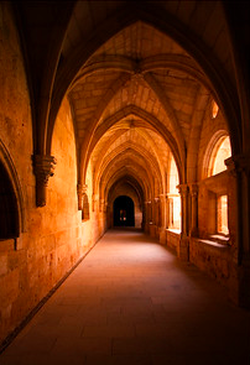 Typically, church growth outcomes are limited to numbers of people indicated by an increased averaged attendance at one specific type of event (i.e., a weekly worship service) in one room (i.e., the “sanctuary” or space where a weekly worship service is held) at a particular addressed-place or tallied as increased paper membership at an annual congregational meeting. This is a building-centered form of church growth, which is foreign to the concept of “church” in the New Testament. On the other hand, Paul’s Letter to the Ephesians imagines believers “growing into a holy temple in the Lord” that forms “a dwelling of God in the Spirit” (2:21–22). The habits and experience of most who attend a building-centered church seem to focus on the individual Christian: sermons target those in the pew with generalized easy-to-make individualized application; the style and design of the service focuses on an audience of one to ensure faithful attendance; and, programs and activities are developed to meet personal needs. Furthermore, most building-centered churches are neighborhood-less, disconnected from the built space of the addressed-church building. By design or default, the building-centered experience is designed to move people away from their respective neighborhoods in order to develop and isolate the building-centered church community—again, separated from its built environment; programs and activities are designed to keep people returning to the “building.” However on the other hand, Paul’s reference to “the inner man” (Eph 3:16c) and the very temple background reverberating throughout Ephesians, as well as, the immediate context (i.e., Eph 3:1–13, 14–19, also 20–21) focuses us, the reader/hearer, on the importance of rethinking “church” and helps to establish a biblical understanding of church as sacred space. This essay seeks to establish Paul’s “inner man” (3:16c) as a corporate temple reference (befitting the context) and as an allusion to back to the Ephesians 2:15c “one new man,” that is God’s growing church-temple. This essay offers a corporate reading of Paul’s Ephesian 3:16 “inner man” reference, which reinforces the gathered-temple-church, the one new man, as sacred space, the liminal space space between (the heavenlies and a local neighborhood, let's say); and, as such, the local temple-church has revelatory significance for disclosing the wisdom and mysteries of God (cf. 3:8–10). This implies that church growth outcomes go (far) beyond mere numbers of people and may include, as the antecedent one new man suggests, social, demographic, and justice outcomes as well. The ensuing study will develop this thesis (I) through leveraging the concept of sacred space as a socio-rhetorical interpretive-model; (II) by weighing the context to determine a “corporate” or “individual” reading of Paul’s use of “inner man” in Ephesians 3:16; (III) by showing that Solomon’s temple dedication and other Old Testament temple texts have implications for a corporate reading of Paul’s “inner man” reference; (IV) by summarizing how a corporate reading “inner man” that denotes the revelatory nature of the temple-church; and, (V) by presenting a list of inferred outcome relevant to church growth.
Tragedy in need of a sequel: The end of the Book of Judges and the shame of its final scenes12/1/2019 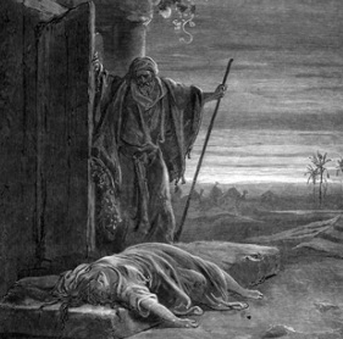 We have come to the end of our study in the book of Judges, my Fall preaching series “The Good, the Bad, & the Ugly, or a Theology of Stupid.” The ending of this very harsh and in-your-face book of the Bible says it all. The Book ends with the verse “In those days there was no king in Israel. Everyone did what was right in his own eyes” (21:25; cf. 17:6; 18:1; 19:1). The book’s conclusion is made up of two epilogues (17:1-18:31 and 19:1-21:25) that are seriously linked together (i.e., Levite stories and women stories and intra-Israel conflicts). These two epilogues do not paint a pretty picture of Israel’s condition at that time in their history. In the second epilogue (chps 19-21), we have two women stories, (1) the gruesome scene of a concubine being cut up in twelve pieces and (2) women being taken forcefully to be married off to the 600 surviving men from the Israel-inflicted slaughter of the tribe of Benjamin. These two stories and scenes should shake us, leaving us a little ashamed that we’ve even read them—for none of us, men or women, are guiltless ourselves. There is no closure. No solution to the idolatry–judgment/oppression–cry-for-YHWH-to-help/God-sends-a-Judge-to-deliver cycles. No final Judge. No final Deliverer. No Savior. The end of the Book of Judges is a mess. Perhaps, we’ve heard the stories so many times we’ve become immune; yet, the ending is crafted to leave us speechless.
We should not be surprised by the Ruth story coming right after a storyline of mistreated and used women that culminates in two tragic women stories at the end of Judges—bringing some resolution to the mistreatment of the women in Judges. And in the latter, 1 and 2 Samuel, this makes sequel-sense, for we have the appearance and promises given to David, who will be the first true king of Israel and a type of Christ—bringing a resolution to “there was no King in Israel.” Not to spoil the ending of this blog post—this David points us to Jesus as the true sequel to the book of Judges. In the scenes of the two epilogues we have one thread that cannot be overlooked, namely tragic stories of women used by men and used for the needs of men. This theme has also been one that has thread itself throughout the Book of Judges, so it should not be that great of a surprise that we are, now, left, at the end, with these tragedies. This is one reason it is not unexpected that our cannon moves us from the Book of Judges right into the Book of Ruth, where we are confronted with the tragedy of a young woman, an outsider, a Moabite, who ends up married and gives birth to someone in the line of David. Again . . . you can see the sequel being developed can’t you--Jesus is a descendent of David. Additionally, it is somewhat serendipitous, meaning I didn’t intend this, but we are starting our Christmas season series of messages with a look at Matthew 1. There is an interesting thread in this genealogy of Jesus that Matthew presents, namely five women: Tamar (Matthew 1: 3; Genesis 38); Rahab (v. 5; Joshua 2), Ruth (v. 5; Ruth 3), Bathsheba, the wife of Uriah (v. 6; 2 Samuel 11), and, of course, Mary (v. 16). It should not have surprised us that Ruth is mentioned in the genealogy of Jesus, linking us to the first sequel after Judges. Is it becoming clearer--Jesus is the sequel to the Book of Judges. Back to the story of the book of Judges: we are left with such tragedy as we find in the two last stories of a concubine that is abused and left for dead and then horribly mutilated to make a point, and the final scenes of the women who are taken from their homes to meet the needs of the remaining 600 men in the tribe of Benjamin. This is how we are left at the end of the Book of Judges. How did we get here? The author of the book of Judges could have chosen any stories to end this book. But as the book ends, we are left asking the question, How did Israel get here? When we see tragedy or the messed up lives all around us, we tend to ask, How did this happen? How did this person wind up so messed up? How in the world did these people end up in a place of hurt, despair, tragedy, jail, the streets, rehab, death? Well, it didn’t happen because of their immediate actions just prior to all the mess or tragedy . . . they just didn’t find themselves in the wrong place at the wrong time . . . they just didn’t take a wrong turn or have a run of bad luck . . . it all started long, long before tragedy struck. The tragic stories of these women in Judges didn’t just happen . . . this is where they ended up because there was no King in Israel and everyone did what was right in their own eyes. In light of the wider, fuller message of Judges, these tragedies happen because there was the absence of true, covenant-obedient leaders. These tragedies happened because Israel didn’t believe and obey God‘s word to them. They didn’t hold to Yahweh as their sovereign King. And, there were no leaders to show them, to model for them, to call them back to loyal obedience to what God had spoken.
Yet, the sequel to the Book of Judges has come. Jesus is the long awaited and anticipated sequel. He is the true Judge, Deliver, Savior that has been longed for. As the women throughout Judges were sacrificed for the needs of men, Jesus has been sacrificed for others—Jesus sacrificed himself for them. Jesus modeled how to treat women, in his relationships to them and in dying for them. Dorothy Sayers, in her book Are Women Human?, reminds us that women were the first to respond to Jesus, they were always present at the crucial moments in His ministry, they were there at the cross and the first at the tomb—they had never known a man like this Man. Sayers writes:
Women are still used to meet the needs of men. And these women are also types, for the weak surround us. The concubine is still at the threshold. Yet, the church knows the King, the true and faithful Judge (Savior, Deliverer), Jesus, the Messiah. We do what is right in our own eyes, yet we are not to allow the land, as Israel had, to Canaanize us (compromise us, allow Christendom and society mold us). We have Jesus, the Savior. And, we, the church, the local church, are to have leaders who model for us faithful-obedience and call us back to what God has spoken in His Word and through the gospel of His final, true Judge, Jesus, the Messiah.
|
AuthorChip M. Anderson, advocate for biblical social action; pastor of an urban church plant in the Hill neighborhood of New Haven, CT; husband, father, author, former Greek & NT professor; and, 19 years involved with social action. Archives
February 2024
Categories
All
|
Pages |
More Pages |
|

 RSS Feed
RSS Feed